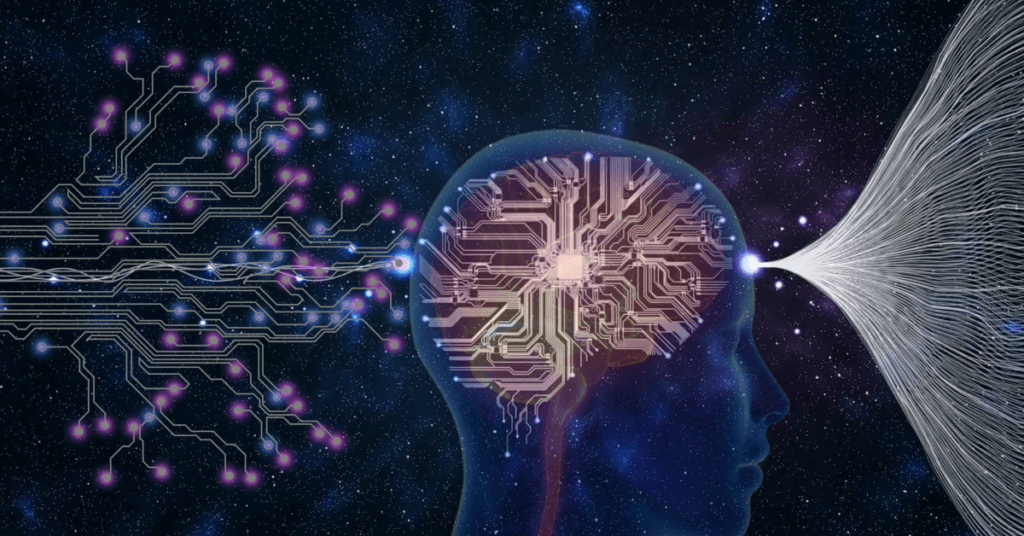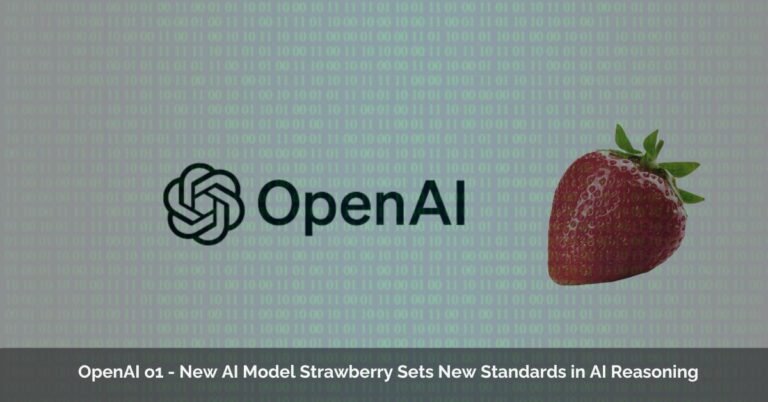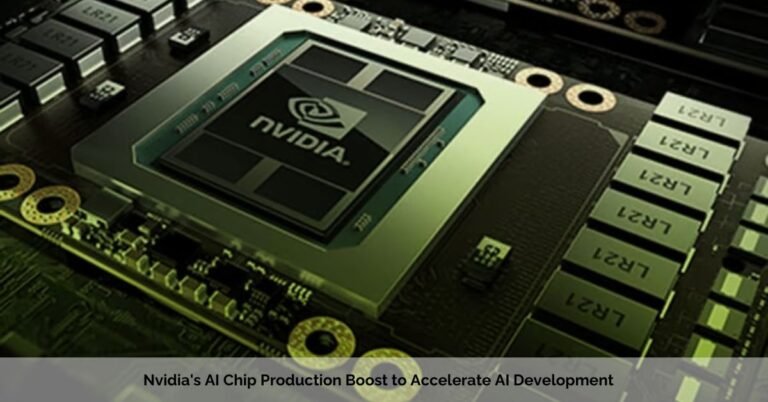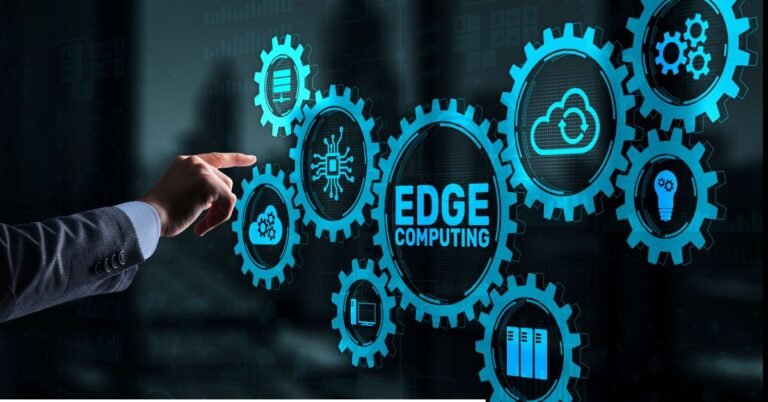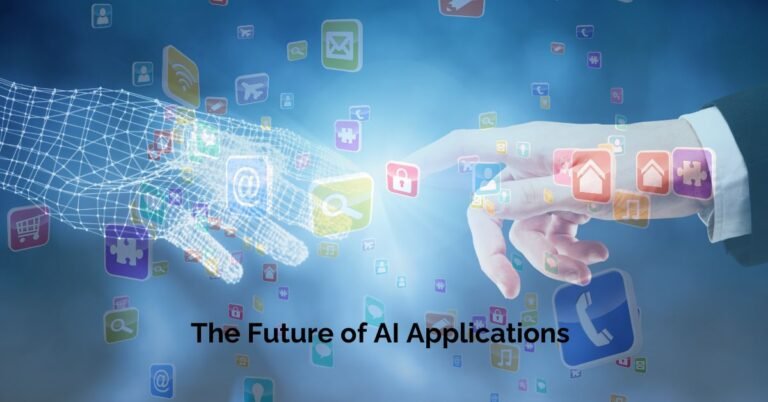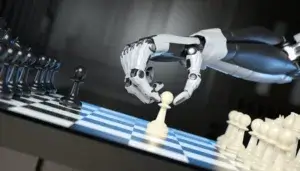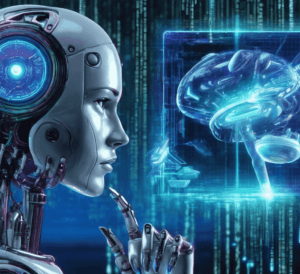Written by: Ameerah
Mind-Blowing Facts about Robots Explored
Are you struggling with repetitive, time-consuming tasks that drain your productivity? Do you find yourself bogged down by inefficiencies and bottlenecks in your workflow? Are errors and inconsistencies costing you time, money, and resources? Imagine the relief of overcoming these struggles with the help of robots.
If you want to experience liberation from tiresome tasks, the optimization of processes, and the eradication of costly mistakes. Stop searching, as we cover all the queries you want to know in this article. Read more to get the answers!
Introduction To Robots And Robotics – Understanding The Basics!
A robot is a programmable machine capable of performing tasks autonomously or semi-autonomously. Robotics, on the other hand, refers to the study and development of robots and automation. Robots come in various levels of autonomy, from human-controlled machines to fully autonomous systems that operate without external input.
At its core, a robot is a programmable machine capable of executing a task. The term robotics refers to the field that concentrates on creating and improving these robots and their automation. Robots exhibit various degrees of autonomy, ranging from human-controlled robots to fully autonomous machines operating without external intervention.
Robotics has evolved significantly since its inception. In 2005, 90% of all robots were predominantly employed in automotive factories, performing tasks like welding or fastening car parts.
Today, the scope of robotics has broadened to include robots that explore extreme environments, assist law enforcement, simplify surgical procedures, and conduct rescue missions.
The Fundamental Features of Robots
Despite the diversity in their designs and functions, robots typically share a few common characteristics:
-
Mechanical Structure:
- Robots have a mechanical structure that enables them to perform tasks in their designated environments. For instance, the Mars 2020 Rover’s motorized wheels, made of titanium tubing, allow it to traverse the harsh terrain of Mars.
-
Electrical Components:
- Robots require electrical parts to control and power the machinery. Typically, an electric current, like a battery, powers most robots.
-
Computer Programming:
- A programmed set of instructions is crucial for a robot to perform its tasks. Without this programming, a robot would be just another piece of machinery.
Unveiling the Etymology and Types of Robots
The term ‘robot’ is derived from the Czech word ‘robota,’ meaning ‘forced labor.’ It first seems in the 1920 play R.U.R., referring to mass-produced workers incapable of creative thinking.
Robots come in various shapes, sizes, and designs, each tailored to perform specific tasks efficiently.
They are categorized into five types:
1. Pre-Programmed Robots:
-
- These robots operate in a controlled environment, performing simple, repetitive tasks. An example would be a mechanical arm on an automotive assembly line.
2. Humanoid Robots:
-
- Humanoid robots resemble humans in appearance and behavior, performing activities like running, jumping, and carrying objects. Sophia by Hanson Robotics and Atlas by Boston Dynamics are examples of humanoid robots.
3. Autonomous Robots:
-
- Autonomous robots operate independently without human supervision. They use sensors to perceive their environment and make decisions accordingly. The Roomba vacuum cleaner is a classic example of an autonomous robot.
4. Teleoperated Robots:
-
- These semi-autonomous robots can be controlled by humans safely via a wireless network. They are often used in extreme conditions, like underwater pipe repairs or landmine detection.
5. Augmenting Robots:
-
- Also known as V.R. robots, these robots enhance human capabilities or replace lost ones. Robotic prosthetic limbs and exoskeletons for lifting heavy weights are examples of augmenting robots.
Software Robotics (Bots):
- Software robots, or bots, are computer programs that perform tasks autonomously, such as chatbots used in customer service. However, these digital entities lack a physical form and are not considered robots in the traditional sense.
Types of Bots:
- Chatbots
- Social Media Bots
- Web Scraping Bots
- Search Engine Bots
- Trading Bots
- Gaming Bots
- Security Bots
- Virtual Assistants
- Utility Bots
- Email Bots
Robot Functionality:
- Independent robots: These robots can function autonomously, taking over dangerous or mundane tasks from humans.
- Dependent robots: These non-autonomous robots interact with humans to enhance or supplement human actions, such as advanced prosthetics controlled by the human mind.
How Robots Work
- Robotics is an interdisciplinary field combining science, engineering, and technology.
- Robots are designed to replicate or replace human actions in performing tasks.
- Independent robots can function autonomously or semi-autonomously.
- They can replace humans in hazardous, mundane, or impossible tasks.
- Robots enhance human actions by providing assistance and efficiency.
- Technology advancements make robots more sophisticated and energy-efficient.
- Robotics focuses on the development and application of robots.
- Robots can range from human-controlled to fully autonomous systems.
- The field of robotics continues to evolve and expand with new innovations.
Applications of Robotics:
-
Robotics in Manufacturing:
The manufacturing industry has long been a significant user of robots. They are employed in product testing, assembly, and quality control tasks. Industrial robots, including collaborative robots (cobots), work alongside humans to improve efficiency and productivity. Today, there are over three million industrial robots in use globally.
-
Logistics Robots:
Robots play a crucial role in shipping, handling, and quality control within the logistics industry. In warehouses, robots assist in tasks such as picking and packing items, optimizing time efficiency. Furthermore, the rise of last-mile robots is revolutionizing the delivery process, with autonomous robots making deliveries to customers’ doorsteps.
-
Robots for Home:
Robots are becoming increasingly common in our homes, helping with household chores, reminding us of schedules, and even providing entertainment. One of the most famous examples is the autonomous vacuum cleaner, Roomba. Additionally, robots are developed for tasks like lawn mowing and pool cleaning.
-
Travel Robots:
By combining robotics and data science, self-driving vehicles are making autonomous transportation a reality. Companies like Tesla, Ford, Waymo, and others are working on self-driving cars to revolutionize how we travel. Rideshare companies such as Uber and Lyft also invest in autonomous vehicles.
-
Healthcare Robotics:
Robots have made significant advancements in the healthcare industry. They assist in various aspects, from robot-assisted surgeries, where robots provide precision and agility, to physical therapy and rehabilitation, helping patients recover from injuries. Toyota’s healthcare assistants and TUG, a hospital robot for delivering supplies, are notable examples.
-
Conservation and Rescue:
Robots are employed in critical situations like firefighting and search-and-rescue missions. These robots can access hazardous environments or locations that are difficult for humans to reach, assisting in disaster response efforts.
-
Military Operations:
Robotics, from detecting landmines and explosive devices to surveillance and reconnaissance missions, is vital in military operations. Robots help reduce risks to human personnel and enhance overall efficiency.
The above examples are just a few examples of how robotics is transforming various industries and providing innovative solutions to complex challenges. As technology advances, we can expect robots to become even more integrated into our daily lives, contributing to greater efficiency, safety, and convenience.
Critical Characteristics of Robots:
1. Mechanical Construction:
- This is the robot’s body, the physical form that allows it to interact with the world. It can be anything from simple manipulators with a few arms to complex humanoids with intricate joints and musculature.
- Materials used vary widely depending on the robot’s purpose. Industrial robots might have sturdy metal frames for heavy-duty tasks, while medical robots might utilize lightweight plastics for delicate procedures.
- Design plays a crucial role. Each joint, gear, and component is carefully chosen to provide the necessary range of motion, strength, and precision for the robot’s specific tasks.
Imagine:
- A robotic arm on an assembly line, its sleek metallic segments precisely maneuvering components.
- A surgical robot with delicate, multi-jointed instruments navigating inside the human body.
- A Mars rover’s rugged wheels and chassis traversing the Martian terrain.
Each robot’s mechanical construction is uniquely tailored to its environment and function.
2. Electrical Components:
- The robot’s nervous system! These components power and control the mechanical parts, bringing the robot to life.
- Power sources can vary. Industrial robots often rely on a direct connection to the electrical grid, while smaller robots might use batteries or even solar panels.
- Control systems are the brains of the operation. They use sensors to gather information about the environment, interpret that data, and send signals to motors and actuators to make the robot move.
Think of:
- The whirring motors and blinking lights of a factory robot.
- The intricate circuitry and processors within a self-driving car.
- The delicate sensors and feedback loops guiding a surgical robot’s instruments.
Electrical components keep the robot functioning smoothly and precisely.
3. Computer Programming:
- This is the robot’s “code of conduct,” the set of instructions that tells it what to do and how to do it.
- Programming can be simple or complex, depending on the robot’s capabilities. Basic robots might have pre-programmed routines, while advanced robots might use artificial intelligence to make decisions and adapt to changing situations.
- Algorithms are the building blocks of robot behavior. They define how the robot processes information, makes choices, and controls its movements.
Envision:
- A robot arm programmed to follow a specific welding path.
- A self-driving car using complex algorithms to navigate traffic and avoid obstacles.
- A medical robot trained to recognize cancerous tissue and perform delicate surgeries.
Computer programming gives robots the ability to perform complex tasks autonomously.
These three characteristics work together in perfect harmony to give robots their unique capabilities. The intricate dance between mechanics, electronics, and programming allows them to move, sense, and interact with the world in ways that were once only science fiction.
Remember, the possibilities are endless! As these technologies continue to evolve, we can expect even more amazing robots to emerge in the future, blurring the lines between machine and intelligence.
Main Components of a Robot:
1. Control System:
- Think of it as the robot’s brain. The control system houses the CPU, which acts as the central processing unit, receiving information from sensors, interpreting it, and sending commands to the actuators.
- It’s the decision-maker, determining how the robot reacts to its environment and executes its tasks. It can be pre-programmed with specific instructions or use AI algorithms for more dynamic behavior.
- Imagine a robot vacuum cleaner. Its control system analyzes sensor data like floor type and obstacle location, then directs the actuators to navigate and clean efficiently.
2. Sensors:
- These are the robot’s eyes and ears, providing vital information about its surroundings. Different sensors detect various things:
- Vision sensors: Cameras capture visual data, allowing robots to “see” their environment.
- LiDAR sensors: Emit laser pulses to measure distances and obstacles.
- Touch sensors: Detect pressure or contact, crucial for object manipulation and collision avoidance.
- Temperature sensors: Monitor environmental temperature, important for tasks like cooking or firefighting.
- The control system uses sensor data to make informed decisions and adjust its actions accordingly.
3. Actuators:
- These are the robot’s muscles, responsible for movement. They convert electrical energy from the power supply into mechanical motion. Different types of actuators exist:
- Motors: Electric motors power robot limbs, wheels, and other moving parts.
- Servos: These controlled motors offer precise positioning and angle control.
- Hydraulics/Pneumatics: Fluid pressure drives actuators for tasks requiring high force or speed.
- Actuators work in conjunction with the control system, translating its commands into physical actions.
4. Power Supply:
- This is the robot’s energy source, providing the juice to keep everything running. Options include:
- Batteries: Common for portable robots, offering flexibility but requiring charging.
- Electrical Grid: Industrial robots often plug directly into the grid for constant power.
- Solar Panels: Eco-friendly option for robots operating in sunlight, like lawnmowers or drones.
- The power supply needs to be sufficient for the robot’s tasks and operating time.
5. End Effectors:
- These are the tools at the end of the robot’s arm or other manipulators. They’re essentially the robot’s hands and allow it to interact with its surroundings and perform specific tasks. Examples include:
- Grippers: Used for grasping and manipulating objects of various shapes and sizes.
- Welders: Specialized tools for high-temperature welding tasks.
- Surgical instruments: Delicate tools for minimally invasive procedures.
- End effectors are designed specifically for the robot’s intended purpose and are crucial for its functionality.
These five components work together in perfect harmony, forming the core of any robot. They enable robots to sense their environment, make decisions, move around, and interact with the world in ways that were once unimaginable. As technology continues to advance, these components will become even more sophisticated and powerful, paving the way for even more amazing robots in the future.
Key Milestones in the Evolution of Robotics:
|
What is Robotics Engineering?
Robotics engineering is a fascinating field that blends mechanical, electrical, and computer engineering to design, build, and operate robots. These robots can take many forms, from the agile humanoids performing parkour to the microscopic surgical robots assisting doctors inside the human body.
At its core, robotics engineering is about creating intelligent machines that can interact with the world around them. This involves a complex interplay of various disciplines:
Mechanical engineering: This provides the physical structure and movement capabilities of the robot, including its limbs, joints, and actuators.
Electrical engineering: This deals with the robot’s electrical systems, power sources, sensors, and control systems.
Computer engineering: This focuses on the software and algorithms that control the robot’s behavior, perception, and decision-making.
key areas of focus in robotics engineering:
Here are some of the key areas of focus in robotics engineering:
Industrial robotics: These robots are used in manufacturing and other industries to perform repetitive tasks, such as welding, assembly, and material handling.
Industrial robotics www.automationalley.com
Service robotics: These robots are designed to assist humans in various settings, such as healthcare, education, and elder care.
Field robotics: These robots operate in unstructured environments, such as underwater, in space, or on disaster sites.
Bioinspired robotics: This field draws inspiration from nature to design robots with superior capabilities, such as agility, adaptability, and resilience.
The field of robotics is constantly evolving, driven by advances in materials science, artificial intelligence, and sensor technology. This makes it an exciting and challenging field for engineers who are passionate about creating the next generation of intelligent machines.
What do robotics engineers do?
Robotics engineers are involved in all aspects of a robot’s life cycle, from conception and design to testing and deployment. They may work on specific components of a robot, such as its sensors, actuators, or control systems, or they may take a more holistic approach, overseeing the entire project from start to finish.
Some of the specific tasks that robotics engineers may perform include:
- Designing and developing robot hardware, including the robot’s body, limbs, and sensors
- Programming the robot’s control software
- Testing and debugging the robot to ensure that it is functioning properly
- Deploying the robot in its intended environment and monitoring its performance
- Maintaining and repairing the robot as needed
What are the benefits of robotics engineering?
Robotics engineering has the potential to revolutionize many aspects of our lives. Robots can be used to perform tasks that are dangerous or tedious for humans, such as working in hazardous environments or performing repetitive tasks on assembly lines. They can also be used to improve the quality of life for people with disabilities, providing them with assistance with everyday tasks.
What are the challenges of robotics engineering?
One of the biggest challenges facing robotics engineers is the development of artificial intelligence (AI) that is sophisticated enough to allow robots to operate autonomously in complex environments. Another challenge is the cost of developing and deploying robots, which can be prohibitive for many businesses and organizations.
Despite the challenges, robotics engineering is a rapidly growing field with a bright future. As technology continues to advance, we can expect to see even more amazing robots emerge in the years to come.
Future of Robotics:
The future of robots promises a wide range of applications, from healthcare and manufacturing to transportation and exploration. Robots with enhanced dexterity, perception, and mobility can revolutionize industries by performing tasks with precision, efficiency, and safety.
Moreover, incorporating natural language processing and emotional recognition technologies enables robots to understand better and respond to human needs, fostering more effective human-robot collaboration.
As robots continue to evolve, they have the potential to augment human capabilities, improve productivity, and enhance the quality of life for individuals worldwide. However, it is crucial to address ethical considerations and privacy concerns and ensure responsible deployment to ensure a harmonious coexistence between humans and robots in the future.
Conclusion:
The advancements in functionalities and features have pushed the boundaries of what robots can achieve, making them more intelligent, versatile, and adaptable. Robots are becoming capable of complex decision-making, learning from their environment, and interacting with humans more seamlessly.

